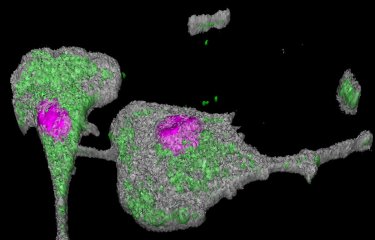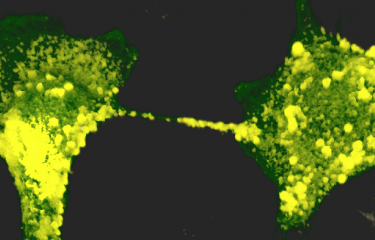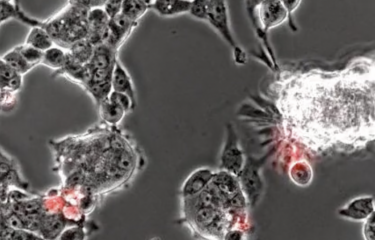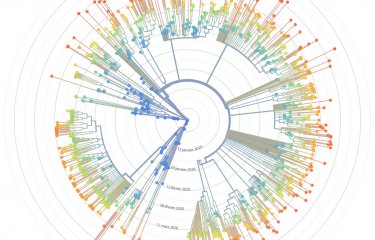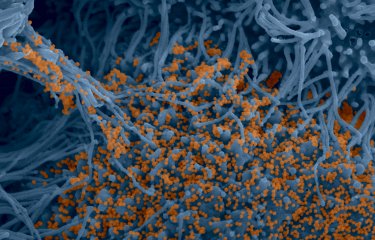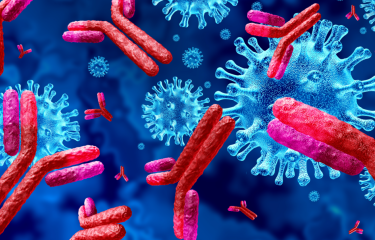What are the origins of SARS-CoV-2? This is the world’s most pressing scientific puzzle. Its pieces scattered throughout the world are currently being sought out by scientists. Their goal: to track down the culprit for the largest health crisis to hit the globe in the past century. Scientists at the Institut Pasteur in Paris and the Institut Pasteur du Cambodge have identified a coronavirus in bats in Cambodia whose genome is 92.6% related to SARS-CoV-2. These findings were published in Nature Communications on November 9, 2021.
With the coronavirus outbreak first reported in Wuhan, central China in 2019, followed by other reports elsewhere in world, scientists from around the world agree that bat species like those identified in China are the most probable reservoir of the SARS-CoV-2 virus behind the COVID-19 pandemic.
The study published by scientists at the Institut Pasteur du Cambodge in Phnom Penh and the Institut Pasteur in Paris adds new information to the investigation into where the COVID-19 pathogen came from and the diversity of coronaviruses in its reservoir.
In 2010, Cambodian scientists joined a French Museum of Natural History expedition to explore the biodiversity of bats near the Preah Vihear Temple. The samples were transported back to the Institut Pasteur du Cambodge, where they have been stored at minus 80 degrees Celsius for the past decade.
Following the outbreak of COVID-19, the scientists began running additional tests on stored samples in search of related coronaviruses.
What they discovered were two samples of a virus close to SARS-CoV-2, which makes them the closest relatives uncovered outside China and adds new information to the investigation into where the pathogen came from.
"By comparison to the human SARS-CoV-2 genome, it showed 92.6 percent similarity. The virus detected in bats can be considered the ancestor or the cousin virus to the current SARS-CoV-2 in humans," said Dr. Veasna Duong, Head of Virology at the Institut Pasteur du Cambodge.
"Most of the genomic regions are similar to those of SARS-CoV-2, with the exception of the coding region for the spike protein, which is not compatible with entry into human cells. This variant is therefore not directly linked to transmission of the virus by bats to humans," explains Etienne Simon-Lorière, Head of the Evolutionary Genomics of RNA Viruses group at the Institut Pasteur in Paris.
The discovery of this virus in a bat species outside China suggests that the geographic distribution of viruses related to SARS-CoV-2 is considerably more widespread than previously believed, and suggests that South-East Asia could be a key area to consider for monitoring coronaviruses.
Source
A novel SARS-CoV-2 related coronavirus in bats from Cambodia, Nature Communications, November 9, 2021
Deborah Delaune1,2,3,14, Vibol Hul4,5,14, Erik A. Karlsson4,14, Alexandre Hassanin6, Tey Putita Ou4, Artem Baidaliuk1, Fabiana Gámbaro1,7, Matthieu Prot1, Vuong Tan Tu6,13, Sokha Chea8, Lucy Keatts9,10, Jonna Mazet10, Christine K. Johnson10, Philippe Buchy4,11, Philippe Dussart4,12, Tracey Goldstein10, Etienne Simon-Lorière1,15 & Veasna Duong4,15
1 Evolutionary Genomics of RNA Viruses, Department of Virology, Institut Pasteur, Paris, France.
2 Institut de Recherche Biomédicale des Armées, Brétignysur-Orge, France.
3 Université Paris-Saclay, Orsay, France.
4 Virology Unit, Institut Pasteur du Cambodge, Institut Pasteur International Network, Phnom Penh, Cambodia.
5 UVE: Aix-Marseille Univ-IRD 190-Inserm, 1207 Marseille, France.
6 Institut de Systématique, Évolution, Biodiversité, Sorbonne Université, MNHN, CNRS, EPHE, UA, Paris, France.
7 Université de Paris, Sorbonne Paris Cité, Paris, France.
8 Wildlife Conservation Society, Cambodia Program, Phnom Penh, Cambodia.
9 Wildlife Conservation Society, Health Program, Bronx, NY, USA.
10 One Health Institute, School of Veterinary Medicine, University of California, Davis, USA.
11 GlaxoSmithKline Vaccines R&D Greater China & Intercontinental, Singapore, Singapore.
12 Virology Unit, Institut Pasteur de Madagascar, Institut Pasteur International Network, Antananarivo, Madagascar.
13 Present address: Institute of Ecology and Biological Resources, Vietnam Academy of Science and Technology, Hanoi, Vietnam.
14 These authors contributed equally: Deborah Delaune, Vibol Hul, Erik A. Karlsson.
15 These authors jointly supervised this work: Etienne Simon-Lorière, Veasna Duong.



